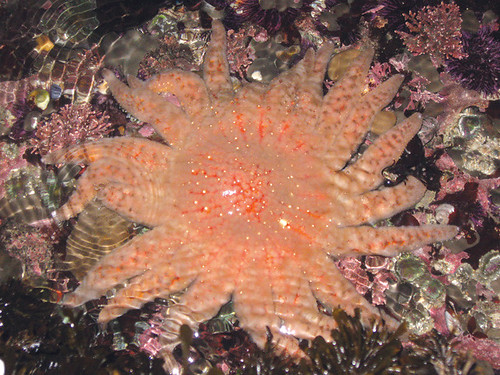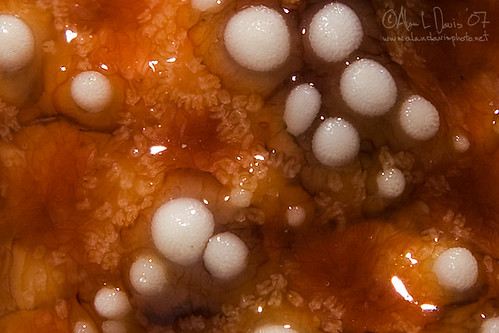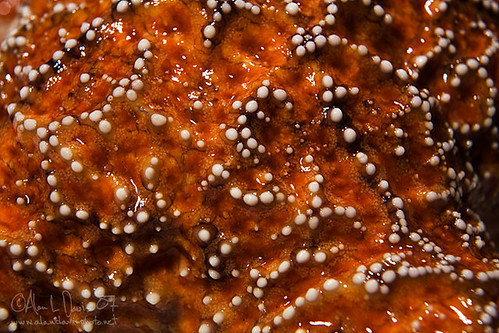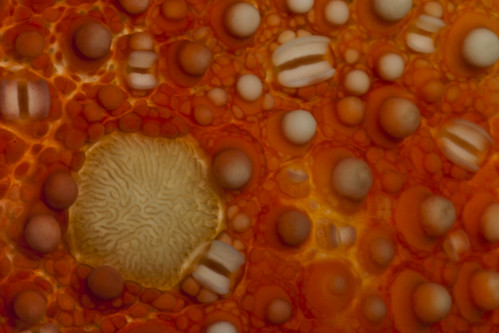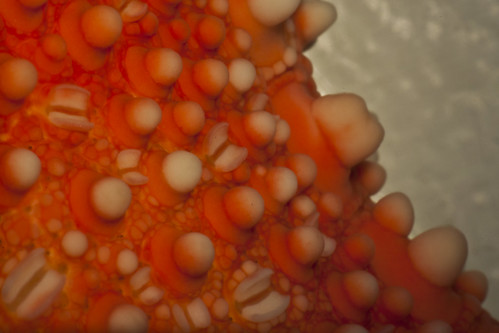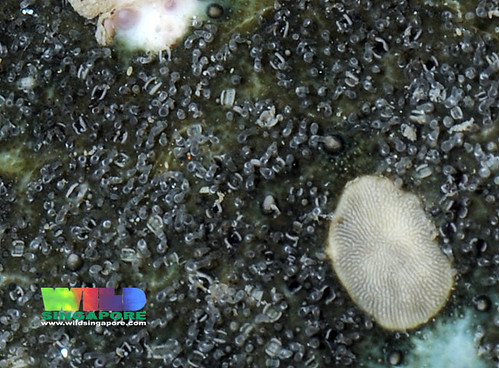 |
| Image courtesy of Hawaiian Undersea Research Laboratory, Honolulu, HI |
All of this talk of deep-sea submersibles goin' down to the bottom of the ocean and so forth has everyone focused on the abyss and the deep-DEEP-sea!
Now, echinoderms are a BIG component of life found below 1000 m and are among the deepest animals found in the abyss.
Brisingid starfishes for example are found as deep as 6000+ meters!
Probably one of the most fascinating questions that interest biologist-regardless of where they work is to ask "How did that species evolve?"
One such question is the subject of today's blog! This features results from a paper published by my
colleague Kerry Howell and her colleagues at Southampton Oceanographic Center in the journal Marine Biology
Howell studied a deep-sea starfish called Zoroaster fulgens which occurs all throughout the Atlantic Ocean, typically between 220 and 4810 meters!
Although you can find it both in European AND North American waters, Howell's study site was
in the Porcupine Seabight located in the northeastern Atlantic.
 |
| From Howell et al., Fig. 2 |
This species occurs widely and yet, the different external features of different individuals varied slightly between several individuals.
Usually, when we see different features on different individuals we think about whether or not those variations might actually represent a different, possibly new species.
Or alternatively, this is what's known as natural variation.
Human beings for example are widespread and can have blond, black, or brown hair, blue or brown eyes. And yet are all considered the same species. Maybe having different body shape is how starfish express natural varaition?
In Zoroaster fulgens, Howell observed that there were 3 different "variant" types...
 |
| From Howell et al, 2004 Fig. 1 |
This top one for example was referred to as the "robust" form with much more solid, shorter arms.
This middle one was referred to as the "slender" form and it had more tapering, more elongate arms..
And finally, this bottom one was referred to as the "long-armed" form due to its very tapering and elongate arms.
As it turns out, each of these different forms, each occurs in a different depth range in the deep-sea. The long-armed one occurs deepest at the 3300-4020 meter depth range whereas the other two were present in shallower (but still deep) waters...
Howell then sampled DNA (2 different genes) from each of the different forms and found that indeed-there were three distinct lineages that corresponded with each distinct morphotype!
 |
| Howell et al. Fig. 3 from 16S data |
She observed that the deeper long-armed form was most closely related to the one with slender arms relative to the shallower "robust" form.
Thus, even though the "robust" form and the "slender" form occur together at the same depth they were the most genetically different from one another. Two separate lineages but living side by side.
In contrast, the "long-armed" form was separated from the other two by a vertical gap of 1100 m.
This suggested that all 3 of these species were reproductively isolated from one another.
The "robust" form is pretty clearly separated from the other two and given the amount of genetic distance relative to the other two forms on the tree, it is very likely what is called a "cryptic species"-one that has effectively "hidden" in plain sight but has been determined to be different as supported by independent (usually genetic) evidence.
So, in Context...
Many
times we often look to examples of speciation that involve models that
show how different populations have become isolated from one another
(eventually becoming species) in a horizontal plane. For example, like this..
Its unclear exactly how these different lineages of Z. fulgens may have separated. What kinds of natural barriers may have led to their isolation?? Other deep-sea invertebrates, such as crustaceans and mollusks also show speciation along deep-sea slopes.
Have the gametes and/or larvae been transported along these great distances? Any number of oceanographic barriers or settings in the deep-sea (at different scales) could have played a role.
For example, currents that isolate settlement, or the topography (ie shape of the ocean bottom) are all possible ways that different populations/lineages of Z. fulgens might have been isolated thus leading to different species.
Here is a pic of some Eocene fossil Zoroaster sp. (that looked like Z. fulgens) which, when alive, likely lived in shallow-water and looked surprisingly like the living ones..
and today.. ALL of the species in the genus Zoroaster (including Z. fulgens) live in the deep-sea. Clearly.. a puzzle is at work and hopefully one day it will get worked out!
 |
| Image courtesy of Hawaiian Undersea Research Laboratory, Honolulu, HI |















